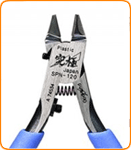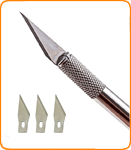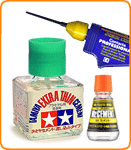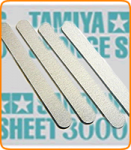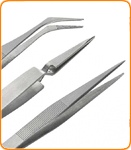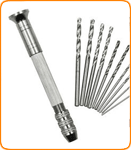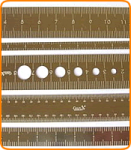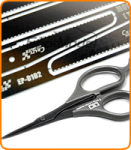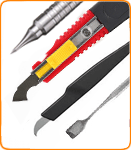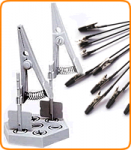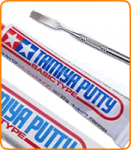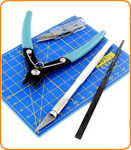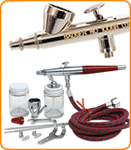Model Factory Hiro K855 1/12 Brabham BT55 1986 Rd.4 Monaco GP #7 Riccardo Patrese / #8 Elio de Angelis
In 1969, Gordon Murray left his native South Africa to join Brabham, where he quickly made a name for himself as a gifted Formula One designer. During his time with Brabham, Murray became renowned for his boundary-pushing innovations that often explored - or exploited - the grey areas of F1 regulations. Notable examples include the "surface-cooled" BT46, the infamous "fan car" BT46B, the BT49 with its ride-height-reducing suspension, and the BT52, designed with a smaller fuel tank to accommodate refuelling. These bold ideas cemented Murray's reputation as a brilliant and unconventional force in F1 engineering.
By 1986, new challenges awaited. Turbocharged engines had become the standard across the grid, but Brabham was left with a BMW engine that was underpowered compared to its rivals - a major disadvantage in an era dominated by horsepower. At the same time, teams had to navigate the 1983 flat-bottom regulations, which limited the generation of downforce. To make matters worse, the team also lost their star driver, Nelson Piquet.
Murray's response was a revolutionary concept: the "low-line" design. The idea was to create a car with the lowest possible profile, combined with a large rear wing to generate the necessary downforce. Achieving this required a series of radical design changes. The BMW engine was tilted at 72 degrees to reduce height, the bodywork was designed lower than the driver's shoulders, and a brand-new gearbox was developed to integrate with the tilted engine. After promising results in the wind tunnel, the concept was fully realised in the BT55, which made its debut at the 1986 season opener in Jacarepagua, Rio de Janeiro.
Despite its striking design and theoretical advantages, the BT55 soon encountered serious issues. The angled engine suffered from oil lubrication problems, the Pirelli tyres (carried over from the previous year) didn't suit the new chassis, and the long wheelbase compromised handling. The gearbox also proved unreliable. While the car demonstrated impressive speed on straights and through corners thanks to its low centre of gravity, it struggled to deliver consistent lap times.
Tragedy struck in May when driver Elio de Angelis was killed during a test session. He was replaced by Derek Warwick, who partnered Riccardo Patrese for the rest of the season.
Throughout 1986, the team made ongoing modifications to improve the BT55's performance. The engine funnels and intake chamber were lowered for the season opener, only to be raised again and exposed through the rear cowl at the next race. At Round 4 in Monaco, the left-side cooler and turbocharger were repositioned to improve weight distribution, and the sidepod ducting was also revised. Various tweaks continued through the season - particularly to the front of the sidepods and rear cowl - but the car's performance remained underwhelming.
In the end, the BT55 became known as a concept that looked promising on paper but faltered in practice. While it failed to deliver results, it symbolised an era of brave, imaginative engineering - a car born from ambition and shaped by ideals.
Murray would go on to join McLaren in 1988, where he and the team developed the legendary MP4/4 - arguably the most dominant F1 car of its time. The MP4/4 successfully applied the "low-line" concept, with the BT55 remembered as the pioneering step that paved the way.
- a full detailed, multi-material kit featuring white metal, resin, etching, turned parts, rubber parts, silk screen decals and various cords allowing for maximum representation of the original vehicle.
- based on the version that raced at Rd. 4 Monaco GP in 1986, which marked de Angelis' last F1 race. Decals for R. Patrese's car for the same race also included.
- aluminum turned parts used for wheel rim, main meter, lower rear damper, wheel shaft and lock nut.
- ECU (engine control unit) parts made using 3D printing, allowing for a detailed interior finish.
- various materials used for piping, tubes, heat resistant sheet etc. for a realistic finish.
- body cowl and nose can be removed post construction, allowing full view of the detailed interior after completion.
- carbon and kevlar decals included on top of sponsor decals. - tire comes pre-printed with maker logo.
By 1986, new challenges awaited. Turbocharged engines had become the standard across the grid, but Brabham was left with a BMW engine that was underpowered compared to its rivals - a major disadvantage in an era dominated by horsepower. At the same time, teams had to navigate the 1983 flat-bottom regulations, which limited the generation of downforce. To make matters worse, the team also lost their star driver, Nelson Piquet.
Murray's response was a revolutionary concept: the "low-line" design. The idea was to create a car with the lowest possible profile, combined with a large rear wing to generate the necessary downforce. Achieving this required a series of radical design changes. The BMW engine was tilted at 72 degrees to reduce height, the bodywork was designed lower than the driver's shoulders, and a brand-new gearbox was developed to integrate with the tilted engine. After promising results in the wind tunnel, the concept was fully realised in the BT55, which made its debut at the 1986 season opener in Jacarepagua, Rio de Janeiro.
Despite its striking design and theoretical advantages, the BT55 soon encountered serious issues. The angled engine suffered from oil lubrication problems, the Pirelli tyres (carried over from the previous year) didn't suit the new chassis, and the long wheelbase compromised handling. The gearbox also proved unreliable. While the car demonstrated impressive speed on straights and through corners thanks to its low centre of gravity, it struggled to deliver consistent lap times.
Tragedy struck in May when driver Elio de Angelis was killed during a test session. He was replaced by Derek Warwick, who partnered Riccardo Patrese for the rest of the season.
Throughout 1986, the team made ongoing modifications to improve the BT55's performance. The engine funnels and intake chamber were lowered for the season opener, only to be raised again and exposed through the rear cowl at the next race. At Round 4 in Monaco, the left-side cooler and turbocharger were repositioned to improve weight distribution, and the sidepod ducting was also revised. Various tweaks continued through the season - particularly to the front of the sidepods and rear cowl - but the car's performance remained underwhelming.
In the end, the BT55 became known as a concept that looked promising on paper but faltered in practice. While it failed to deliver results, it symbolised an era of brave, imaginative engineering - a car born from ambition and shaped by ideals.
Murray would go on to join McLaren in 1988, where he and the team developed the legendary MP4/4 - arguably the most dominant F1 car of its time. The MP4/4 successfully applied the "low-line" concept, with the BT55 remembered as the pioneering step that paved the way.
- a full detailed, multi-material kit featuring white metal, resin, etching, turned parts, rubber parts, silk screen decals and various cords allowing for maximum representation of the original vehicle.
- based on the version that raced at Rd. 4 Monaco GP in 1986, which marked de Angelis' last F1 race. Decals for R. Patrese's car for the same race also included.
- aluminum turned parts used for wheel rim, main meter, lower rear damper, wheel shaft and lock nut.
- ECU (engine control unit) parts made using 3D printing, allowing for a detailed interior finish.
- various materials used for piping, tubes, heat resistant sheet etc. for a realistic finish.
- body cowl and nose can be removed post construction, allowing full view of the detailed interior after completion.
- carbon and kevlar decals included on top of sponsor decals. - tire comes pre-printed with maker logo.
| General Info | |
| Scale | 1/12 |
| Type | Scale Model Kit |
| Subtype | Racing Car |
- Stock: In Stock
- Reward Points: 1050
- SKU: MFH-K855
- 2pcs in Stock

Model Factory Hiro
MRP: US$857.22 Save: US$148.77
17% OFF
US$708.44
(excl. Tax)
"In-Stock" Really Means It
Combine Shipping & Save
SAME or Next day shipping*
Pay in 4 interest-free payments of US$177.11. Learn more
There are no reviews
Maybe you can help? Many users will be grateful to you. And so are we.













